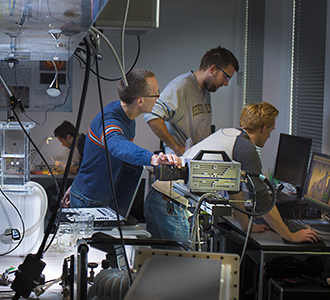
Transcatheter heart valves are being used in an increasing number of patients. They provide the best alternative to patients who are not eligible for open heart surgery, but they are also used in other patient groups. The devices have a metal stent structure that may impact local blood flow patterns. We are currently investigating those potential flow disturbances.
Moreover, this valve type can also be inserted into a previous implanted but deteriorated surgical heart valve as a valve-in-valve. There is, however, a functional challenge: in patients with small surgical valves, the orifice area is too narrow. To overcome this challenge, we are currently investigating how fracture of the degraded bioprosthesis in situ can be accomplished to allow a larger expansion of the transcatheter valve and how the fracture mechanics are affected in different patients with various degree of calcification.
Patients with atrial fibrillation have an increased risk of blood clot formation which potentially can cause a stroke. The primary location where these clots form is the left atrial auricle. Anticoagulation therapy is therefore warranted. However, for those patients where this is not feasible, the left atrial auricle can be occluded using a specific catheter-based device. We are currently investigating the optimal delivery method, and also what functional impact the occlusion has on atrial compliance.
Aortic root aneurisms need surgical treatment where the diseased part of the aorta is replaced by a prosthetic tube. There are different approaches on how to shape the prosthetic tube. We are currently investigating how the different approaches impact the biomechanical function in terms of forces and geometry. Moreover, we are also mapping the biomechanical properties of the aortic wall tissue to gain insight on how an optimal prosthesis should be designed.
Congenital heart disease often involves narrowing of the pulmonary heart valve. For new borns and infants there are no available prostheses that match in size and accommodate growth. We are currently developing and testing a extracellular matrix derived temporary heart valve conduit that can be made bench top during surgery. The tissue will enable in-growth of host cells and potentially accommodate growth. The geometry must be refined to establish optimal valvular function.